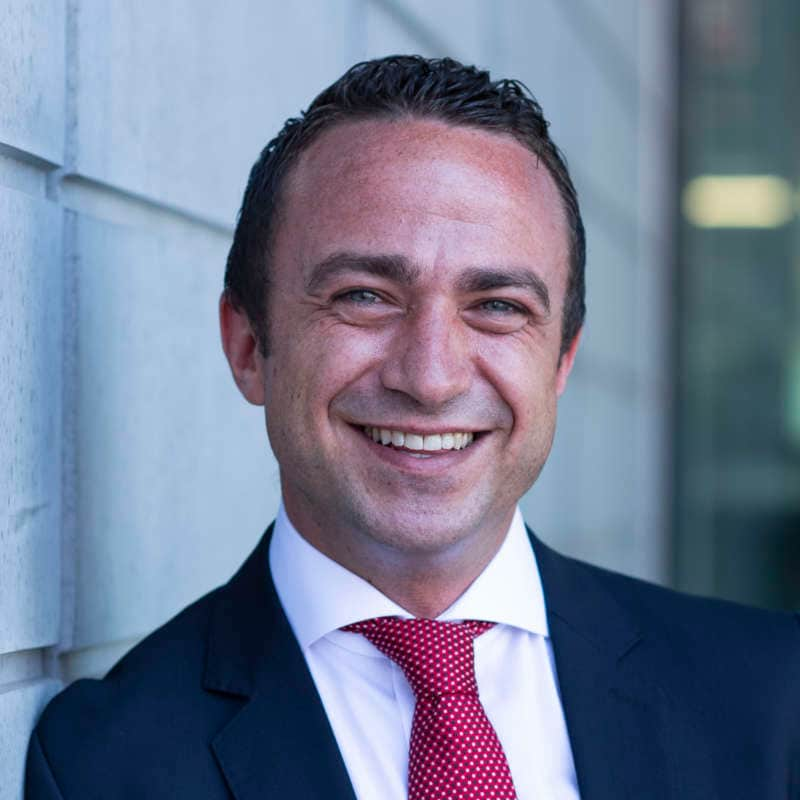PwC’s recently released global survey of asset managers and institutional investors and its 2028 market projections show that disruptive technologies are reshaping investor expectations, pushing the frontiers of innovation and unlocking new, untapped markets. How can the Swiss industry seize the opportunities?
As disruptive technologies such as GenAI, DLT, big data and cloud computing reshape the industry, asset and wealth management (AWM) firms must rethink their competitive strategies. Four out of five survey respondents report that this kind of tech is fuelling revenue growth. Seven out of ten say that disruptive tech is driving product and service innovation. It’s also moving from the back office and playing a growing role in client interactions.
The defining industry trends The survey reveals four major opportunities emerging around the disruption:
What about Switzerland? PwC’s research reveals in detail the challenges facing asset and wealth managers in Switzerland:
Unfavourable product mix and increased costs
Despite the fact that investors are sitting on a mountain of cash, an unfavourable product mix has negatively impacted the profitability of Swiss AWM firms. With listed stocks seen as too expensive, geopolitical risks on the rise, gold at record prices, competition for lucrative thematic funds intensifying, and a general lack of new products to attract net new money, money market funds have been one of the few asset classes where AuM is increasing.
The problem is compounded by rising costs: the industry's median operating margin dropped from 42% in 2021 to 36% in 2022, and further to 32% in 2023. While most asset managers aren’t in immediate danger, the critical question remains: what will happen over the next five to ten years?
Declining margins potentially triggering M&A activity
There could be a renewed rise in M&A activity as asset managers face profit pressures and seek new market segments. While offering alternative investments to retail investors is a favoured strategy to combat shrinking margins, many firms lack the necessary expertise.
Asset managers could also increasingly acquire boutique firms specialising in alternatives. Fund investors are consolidating GP relationships, writing bigger cheques to bigger managers with diverse alternative strategies. However, not all asset managers are well-positioned to succeed in this space, and M&A activity in Switzerland is expected to remain subdued given the high number of buyers and relative lack of sellers.
Opportunities and threats for traditional asset managers
There’s a shift taking place towards unregulated products with a shorter time to market, including certificates, structured products and ETPs. Advisory mandates, as opposed to discretionary ones, are growing in popularity as investors seek more flexibility, while the “retailisation” of private assets is increasing with low-entry evergreen and LTIF products.
Distribution platforms are increasingly competing with asset managers for the same clients, and asset managers’ client bases are becoming more concentrated. Platforms squeeze asset managers’ profitability, offering better trailer fees, reporting and a wider product range. To stay competitive, asset managers must invest in sales force training and provide a better digital experience.
Added to these threats is the accelerating of adoption of active ETFs, which investors are using as a lower-cost alternative as core holdings, as satellite positions to complement passive index-tracking allocations, or to express specific investment views. Active ETFs are likely to capture market share from traditional active managers.
ESG: opportunity or cost driver?
Swiss asset managers are recognised for their leadership in sustainable finance, though ESG product demand has dropped significantly since the pandemic. Despite efforts by private banks and independent managers, investor interest remains low, though pension funds and family offices continue to support ESG. Burgeoning ESG regulations are raising compliance and operational costs for asset managers.
The industry must reassess its pricing and investment strategies, viewing ESG factors as an investment risk rather than part of the fiduciary duty debate. Public discourse around ESG has been harmed by criticism of asset managers and withdrawals from initiatives like Climate Action 100+, potentially undermining ESG’s role in capital markets.
Outsourcing: the new normal
The main factor prompting asset managers to shift activities to external providers, predominantly overseas, is cost. At the same time, the industry is disaggregating the value chain to evaluate the value added by each function.
Asset managers are looking into outsourcing all non-core functions outside the core capability functions of investing (product development, selection of investments and risk management). Outsourcing for quality reasons is of minor importance at present but is expected to increase as asset managers focus on core functions and address the lack of local talent. Outsourcing is going both ways: large asset owners are outsourcing not only the selection of investments to asset managers, but also the asset allocation strategy.
The rise of AI in the AWM value chain
AI is being increasingly used in portfolio management, trading and risk management. However, much of what is branded as AI is not new but has existed for a long time in the form of modelling techniques. AI is still far from replacing humans completely, with most AI output controlled by some form of human supervision.
AI has benefits across the AWM business. In portfolio management it can produce better asset return and risk estimates and solve portfolio optimisation problems with complex constraints. In trading it can process large amounts of data to generate trading signals; algorithms can be trained to automatically execute trades based on these signals. In risk management, AI helps risk managers to validate and back test risk models. AI approaches can also extract information more efficiently from various sources of structured or unstructured data and generate more accurate forecasts.
However, AI requires proper corporate governance to ensure data quality is good and the task being performed isn’t too complex for humans to monitor or understand.
How asset and wealth managers worldwide can respond to the challenges:

1. Make tech a value creator
Innovate products, expand into private markets, engage mass-affluent client, and break down silos in your data management.

2. Collaborate to compete
Forge strategic partnerships within ecosystems, support smaller players, maximise ROI and manage third-party risks.

3. Reimagine talent and skills
Accelerate upskilling in your workforce, harness tech-driven workforce value and shape future roles and career paths.

4. Build confidence in disruptive tech
Enhance visibility, bolster protection and prioritise cybersecurity across your organisation.
Summary
To remain viable long-term amid shifting investor demands and rapid technological progress, organisations in the asset and wealth management industry need to pursue growth beyond their traditional business model. Check out PwC’s AWM industry survey and 2028 industry projections for more detailed insights, and reach out to us if you want to discuss these or any other matters in more depth.








